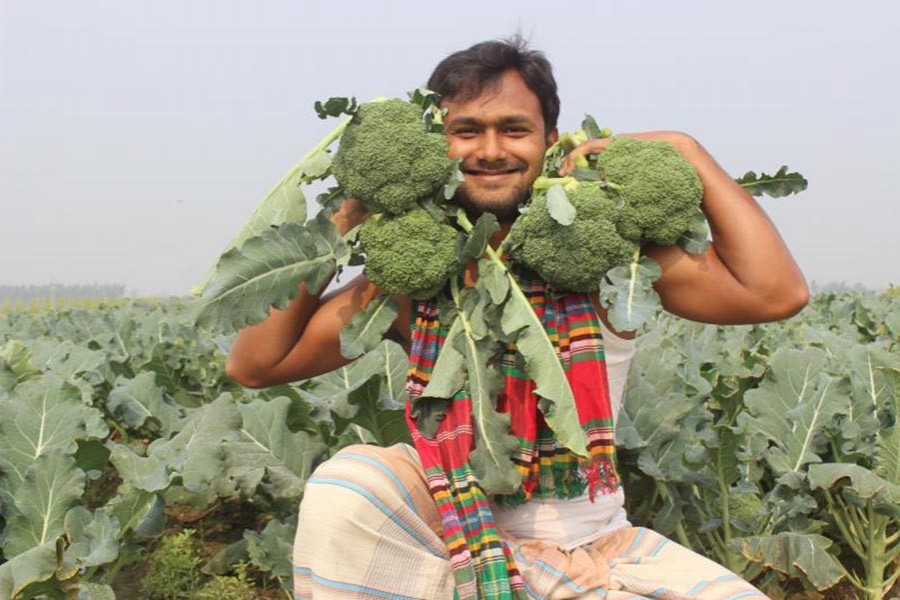The development of infrastructure and storage facilities tends to contribute to increased commercialisation of crops. Agricultural practices begin to be carried out for generating surplus to own consumption. At the same time, marketing strategies also claim a berth in academic discourse. Two factors may be adduced to the dramatic shift in paradigm. First, rapid spread of modern technology led to more production per unit of land and thus a surplus over consumption to siphon off. The technology also helped release land for non-paddy crops like vegetables, pulses oilseeds which are historically cash crops. Second, the rural-urban linkages led to growing exchange of goods and services. A good marketing system is called for because a good marketing network helps both producers and consumers in many ways as the system: (a) enables primary producers to get a better return or raises the farm gate price; (b) provides facilities for selling crops at an incentive price; (c) reduces the price-spread between the primary producers and the ultimate consumers; (d) makes all farm products available to consumers at reasonable price and (e) reduces the role of middlemen who steals a significant slice on the value chain.
The trends in marketing of paddy tell us that marketing of staple food increased over time. This has happened despite farm size becoming smaller. For example, in the 1980s, a quarter of the total output of households found way to markets; in recent years the share roughly doubled due to: (a) an increase in land productivity. Adoption of modern varieties helped households reap a better harvest from the same amount of land than previously; (b) improvements in communications, including telecommunications, and media have widened the base of market information. Advent of mobile phones reduced the roles of middlemen and (c) a reduction in household size has reduced home consumption to leave some outputs for the market. However, the proportions of marketing of other crops have historically been high but only got higher over time. This is not unusual given that, most of these are perishable products and traded for cash income. Farmers usually meet their non-rice demands by selling these commodities. Potato particularly is a case where substantial expansion of marketing has taken place because (a) cold storage facilities expanded, (b) modern varieties were introduced and (c) cultivation of potato spread from a few regions to all over the country.
In Bangladesh, marketing of paddy is mostly done by medium and large landowning households. Nearly half of the total marketed paddy comes from a small proportion of big land owners in rural areas. As opposed to this, about one-third of the marketed output comes from about 76 per cent of rural households owning up to 0.40 ha of land . From the angle of economic status, we observe that solvent households comprise 15 per cent of rural households and they supply 41 per cent of the marketed paddy; about 'self-sufficient' households comprising 42 per cent supply 47 per cent. Over time, the share of both groups increased. Finally, the 'poor' segment of rural households constitutes about 45 per cent but they supply only 13 per cent of the total marketed output. The policy implication of this precarious position is that we need to keep the price of paddy at a remunerative level to appease the actors in the market. The bumper boro harvest this year at about 20 million tons owes to an extent to the rising price of paddy. At the same time, the impact of that on the poor households should not go out of focus and this calls for non-market way of lessening their woes.
It is being hypothesised that, harvest/distress sales are signs of economic dependence of households which attempt to dispose off produce as quickly as possible to pay for debt or meet other exigencies. Close on heel is the hypothesis that, their inability to hold harvested crops deprives them of a better price in future when supply in the market decreases. We observe that sales within one month of the harvest increased over time. Interestingly, poor farms (up to 0.40ha) have reduced distress sales over time, although in absolute terms, thy still sell roughly two-thirds of output immediately after the harvest compared to about 50 per cent of the large and the medium farms. By and large, medium and large farms sell a smaller proportion of their crops at harvest than small and marginal farms because the former has higher economic capacity for holding stocks. Or, it may be so that the former could wait for fortune from market swings. Second, the proportion of output sold at harvest - and for all classes of farmers - has increased over time. This is particularly true for recent years because the price margin for sales later in the season has declined. However, in periods of rising prices, larger farmers would hold more in stocks in the expectation of getting better prices.
From policy point of view, farmers should be awarded remunerative prices even if it costs consumers. If better prices cause increased output, government could draw upon its stocks to help the most poor ones through distribution mechanism. Remember that agriculture especially crop cultivation is now being done by poor and marginal farms and a rise in prices of output would help them and the non-farm poor through augmentation of supply.
Abdul Bayes is a formerProfessor of Economics at Jahangirnagar University. [email protected]


